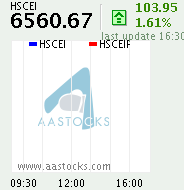
Stock prices have been falling heavily on exchange markets around the world in a couple of days. The Dow Jones Index on Wall Street closed down below 10000 to 9258 yesterday. The global stock indexes also tumbled by 5 to 6 percent on average last day.
Yesterday, Japan's Nikkei index suffered its biggest fall by over 9 percent to 9203 and Hong Kong's Hang Seng Index fell to 15431, which marked a fall of about 8% just in a single day.
The US treasury secretary, Henry Paulson, has warned some American banks will still fail despite the US$700 billion Troubled-Asset-Relief-Program (TRAP program?) to shore up the financial system. Mr Paulson said the financial crisis would not end soon.
There was a warning from the IMF (International Monetary fund) that global financial markets were facing their most dangerous shock since the 1930s. In a co-ordinated move central banks cut interest rates by 0.5 percentage yesterday.
I think the global credit seizure is due to growing distrust among banking institutions that they are afraid of credit defaults in the midst of today monetary market chaos as reflected by the soaring of inter-bank interest rates such as HIBOR, LIBOR, NIBOR and the TED spread(see note below). Dis-leverage works amid global credit seizure due to hoarding of cash.
Firstly, I think the credit seizure is possible in the presence of "liquidity trap". As we learn in monetary economics, a liquidity trap occurs when the nominal interest rate is close or equal to zero. In this kind of situation, people do not expect high returns on physical or financial investments, so they keep assets in short-term cash bank accounts or hoards rather than making long-term investments. In a liquidity trap situation, banks and other financial intermediaries are unwilling to lend. Thus, the central bank's newly created liquidity is trapped behind the banks even the government eagers to inject money into the economy.
Therefore, the monetary authority is unable to stimulate the economy with monetary policy tools such as interest rate cut or/and increasing the monetary base. This makes a recession even more severe and can contribute to deflation.
Secondly, I was really inspired by the Quantity Theory of Money seeking an explanation for the above phenomenon. This can be explained with the aid of an equation that originally modeled from an identity: MV=PY, where M stands for money supply in the economy and V represents the velocity of money circulation that measures the speed at which a given sum of money circulates in the economy. And, P stands for the general price level and Y refers to the real output so that P times Y referring to the nominal income of the economy. V seems not stable now and decelerates in view of the prevailing global credit seizure and M is relative stable in the short run despite the US$700 billion bailout plan. Therefore, we may predict that either P or Y falls or both P and Y together (the nominal income) fall then. Thus surely, the global credit seizure accompanied by the loss of public confidence would bring disastrous consequence to our economy. The results may be the disguised deflation and economic depression if the government stops injecting money to the market and default risk keeps rising.
The immediate result is that the asset prices will be going down further as investors try to acquire adequate liquidity to run their businesses.
The credit crunch could stall the economic growth. However, on the other hand, if the public confidence returns swiftly and credit default risk lowers significantly, the market scenario will be reversed and the credit leverage works again.
Note: TED spread --
The TED spread is the difference between the interest rates on inter-bank loans and short-term U.S. government debt ("T-bills").
Initially, the TED spread was the difference between the interest rates for three-month U.S. Treasuries contracts and the three month Euro-dollars contract as represented by the London Inter Bank Offered Rate (LIBOR).
The TED spread is an indicator of perceived credit risk in the general economy.












